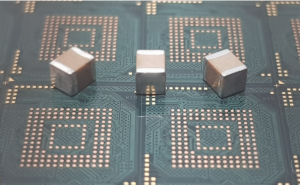All the capacitors that use ceramic as the medium are called ceramic capacitors, the vast majority of people are called according to the patch and plug-in, but this name is not very unified, and many people are called according to the shape, such as chip ceramic capacitors, circular ceramic capacitors, tubular ceramic capacitors, etc. For semiconductor equipment, chip ceramic capacitor is very important, otherwise, those using the latest micro-machining technology manufacturing microprocessor, DSP, microcomputer, FPGA and other semiconductor devices, will lose normal work, so we should be careful when choosing chip ceramic capacitor, the following is mainly about its characteristics parameters.
1. Frequency characteristics: electrical parameters change with the electric field frequency. A capacitor operating at high frequencies has a smaller permittivity than at low frequencies, so the high-frequency current is lower than at low frequencies. The higher the frequency, the greater the loss. In addition, when operating at high frequencies, the distribution parameters of the capacitor, such as the electrode resistance, the resistance between the wire and the electrode, etc., will affect the performance of the capacitor. All this limits the frequency of use of capacitors.
2. Insulation resistance: indicates the leakage current. Typically, with smaller capacity capacitors, the insulation resistance can reach hundreds or thousands of megohm. Electrolytic capacitors generally have small insulation resistance. Relatively speaking, the greater the insulation resistance, the smaller the leakage current.
3. Capacitance allowable deviation: This last time we talked about the role of the safety capacitor mentioned, as the name suggests, this is the maximum allowable deviation range of the capacitor. Commonly used capacity errors are: J represents the allowable deviation of ±5%, K represents the allowable deviation of ±10%, and M represents the allowable deviation of ±20%.
4. Rated operating voltage: can work stably and reliably for a long time in the circuit, and can withstand the maximum DC voltage, also known as voltage resistance. For electronic devices with the same structure and capacity, the higher the withstand voltage, the larger the volume.
5. Loss: The chip ceramic capacitor consumes energy due to the heat generated per unit time under the action of an electric field. This loss mainly comes from medium loss and metal loss. It is generally expressed as the loss Angle tangent value.
The above is some basic common sense about the chip ceramic capacitor, want to know more about the capacitor related consultation, you can pay attention to the website, do collection click consultation customer service, to bring you more semiconductor industry information.
Post time: Nov-14-2023







